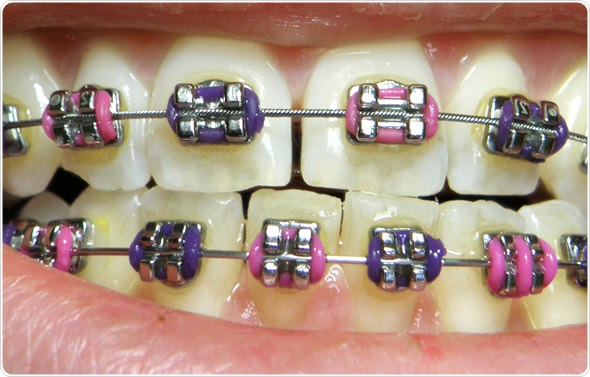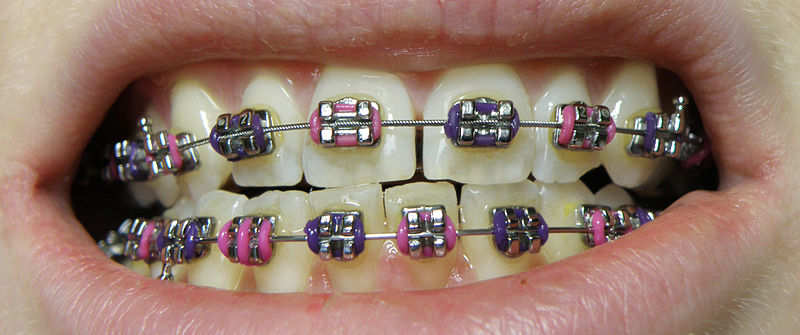Why Cumming Invisalign is the Perfect Choice for a Discreet Orthodontic Solution
Wiki Article
Comprehensive Overview to Orthodontics Procedures for Correcting Dental Imbalances
Comprehending the complexities of each treatment, including their mechanisms, benefits, and possible disadvantages, is vital in making notified decisions regarding one's orthodontic treatment. As we navigate via the detailed overview to orthodontic treatments for correcting oral misalignments, the complex information of each approach will unfold, dropping light on the course towards a useful and harmonious dental alignment.Orthodontic Procedures Summary

In addition to clear aligners and traditional dental braces, orthodontists might also recommend other interventions like headgear, palatal expanders, or retainers to address specific positioning problems (cumming orthodontics). These procedures are tailored per individual's special requirements and may entail a combination of treatments to achieve the wanted results. Regular modifications and surveillance are essential parts of orthodontic treatment to guarantee progress gets on track and to make any kind of essential adjustments along the road. By undertaking orthodontic procedures, patients can not just attain a straighter smile but likewise improve their general dental health and function.
Conventional Dental Braces: Exactly How They Function
When thinking about orthodontic treatments for oral misalignments, conventional dental braces stand apart as a time-tested approach for remedying teeth placing. Standard braces are composed of brackets, cords, and bands that function with each other to apply constant stress on the teeth, gradually relocating them into the wanted positioning. The braces are connected to the teeth using a special adhesive, and the cords are threaded with the brackets. By readjusting the stress of the wires, orthodontists can manage the direction and force put on each tooth, directing them into proper placement with time.
As pressure is used to the teeth with the dental braces, the bone bordering the teeth is improved to sustain the new tooth settings. Individuals will need routine changes at the orthodontist's workplace to make certain the braces proceed to apply the right stress for effective teeth motion.
Invisible Aligners: Advantages And Disadvantages
These clear, custom-made trays are practically unnoticeable when put on, making them an enticing choice for people seeking a much more aesthetically pleasing orthodontic therapy. Individuals can eliminate the aligners prior to consuming or brushing their teeth, reducing the risk of food obtaining stuck in the home appliance and streamlining the cleaning procedure.
Surgical Orthodontic Options
Surgical treatments in orthodontics present viable choices for resolving complex dental imbalances that may not be efficiently resolved through conventional orthodontic treatments. While standard dental braces and unnoticeable aligners can fix numerous orthodontic issues, certain cases require surgical intervention to achieve optimum results. Surgical orthodontic choices are normally advised for extreme malocclusions, considerable jaw discrepancies, and cases where the underlying bone structure needs modification to achieve correct positioning.One usual medical orthodontic treatment is orthognathic surgery, which entails repositioning the jaws to deal with functional concerns such as problem eating or talking. This surgical procedure is often performed in partnership with an orthodontist who assists line up the teeth before and after the treatment. Surgical orthodontics might likewise entail procedures to subject impacted teeth, eliminate excess gum cells, or improve the jawbone to create an extra unified facial profile.
Prior to thinking about medical orthodontic choices, patients undergo a comprehensive evaluation to determine the necessity and potential benefits of such treatments. invisalign. While surgery may appear complicated, it can dramatically improve both the function and appearances of the smile in instances where standard orthodontic treatments fall short
Retainers and Post-Treatment Treatment

Failing to abide with post-treatment care guidelines can result in relapse, where the teeth progressively relocate back in the direction of their initial settings. Constant retainer wear, good oral health, and normal dental exams are vital for preserving the results achieved through orthodontic surgical treatment and ensuring the long-term stability of the fixed dental alignment.
Final Thought
In final thought, orthodontic treatments provide various alternatives for fixing dental misalignments. Surgical orthodontic choices are readily available for more severe misalignments. Overall, orthodontic procedures can properly enhance dental health and visual look.As we navigate via the detailed guide to orthodontic procedures for correcting oral imbalances, the intricate information of each method will unfold, dropping light on the path toward a practical and harmonious dental placement. - cumming braces
One of the most typical orthodontic therapies is the use of dental braces, which are composed of metal brackets and cables that use gentle stress to progressively shift teeth into the desired placement.When thinking about orthodontic treatments for dental misalignments, traditional braces stand out as a time-tested method for correcting teeth positioning. Furthermore, undetectable aligners might not be appropriate for complicated orthodontic issues that require even more substantial teeth motion, as they are generally advised for light to moderate cases. Retainers are tailor-made orthodontic devices developed to hold teeth in their corrected placements after the completion of orthodontic therapy.
Report this wiki page